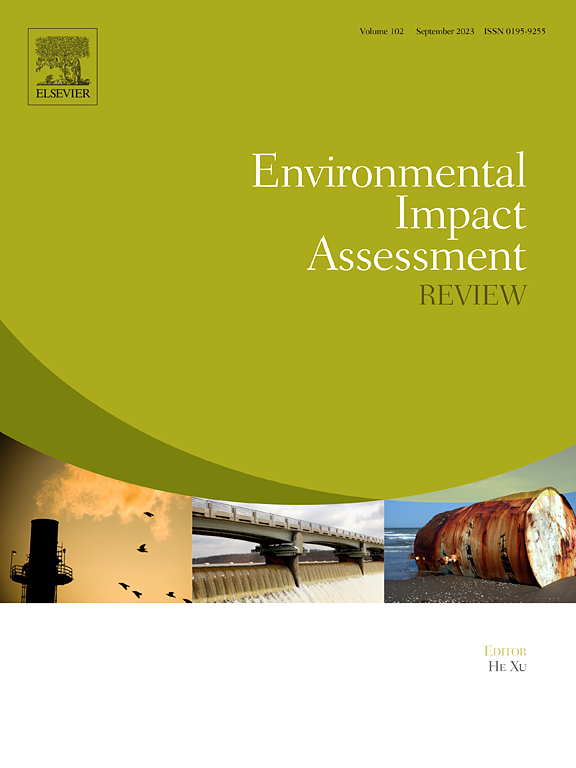A wind farm siting framework that integrates vegetation carbon sequestration objectives: A case study in Inner Mongolia, China
IF 9.8
1区 社会学
Q1 ENVIRONMENTAL STUDIES
引用次数: 0
Abstract
Compared with traditional fossil fuels, wind power, as a typical clean energy source, is capable of effectively reducing carbon emissions. However, recent studies have shown that wind farms (WFs) in some regions may suppress vegetation carbon sequestration (VCS), thereby reducing the regional carbon sink capacity and diminishing the associated life-cycle emission reduction benefits. Therefore, WF siting requires a trade-off between development potential and ecological impact to avoid negative consequences while promoting synergistic gains. This study presents a new WF siting framework that uses a random forest model to predict the impact of WF deployment on VCS, and integrates this analysis with a development potential map obtained from multi-criteria evaluation to generate a comprehensive siting map. Using the Inner Mongolia grassland region as a case study, we demonstrate the implementation of this framework. The results reveal that 9169.09 km2 of grassland has been identified as priority development areas. These areas, which are located mainly in northeastern Xilingol and western Chifeng, not only possess high development potential but also significantly enhance VCS. The siting framework developed in this study achieves synergistic optimization of wind power development and VCS, which addresses the lack of ecological considerations in previous studies and provides new insights for further emission reductions through renewable energy, demonstrating broad application potential.
整合植被碳封存目标的风电场选址框架:中国内蒙古的案例研究
与传统化石燃料相比,风能作为一种典型的清洁能源,能够有效地减少碳排放。然而,最近的研究表明,一些地区的风电场可能会抑制植被碳固存,从而降低区域碳汇容量,从而降低相关的生命周期减排效益。因此,世界自然基金会的选址需要在发展潜力和生态影响之间进行权衡,以避免负面后果,同时促进协同收益。本研究提出了一种新的WF选址框架,该框架使用随机森林模型来预测WF部署对VCS的影响,并将该分析与多标准评估获得的发展潜力图相结合,生成综合选址图。以内蒙古草原地区为例,对该框架的实施进行了论证。结果表明:确定了9169.09 km2的草地为重点开发区域;这些地区主要分布在锡林郭勒东北部和赤峰西部,不仅具有很高的发展潜力,而且VCS显著增强。本研究构建的选址框架实现了风电开发与VCS的协同优化,解决了以往研究中生态考虑不足的问题,为可再生能源进一步减排提供了新的思路,具有广阔的应用潜力。
本文章由计算机程序翻译,如有差异,请以英文原文为准。
求助全文
约1分钟内获得全文
求助全文
来源期刊

Environmental Impact Assessment Review
ENVIRONMENTAL STUDIES-
CiteScore
12.60
自引率
10.10%
发文量
200
审稿时长
33 days
期刊介绍:
Environmental Impact Assessment Review is an interdisciplinary journal that serves a global audience of practitioners, policymakers, and academics involved in assessing the environmental impact of policies, projects, processes, and products. The journal focuses on innovative theory and practice in environmental impact assessment (EIA). Papers are expected to present innovative ideas, be topical, and coherent. The journal emphasizes concepts, methods, techniques, approaches, and systems related to EIA theory and practice.
 求助内容:
求助内容: 应助结果提醒方式:
应助结果提醒方式:


